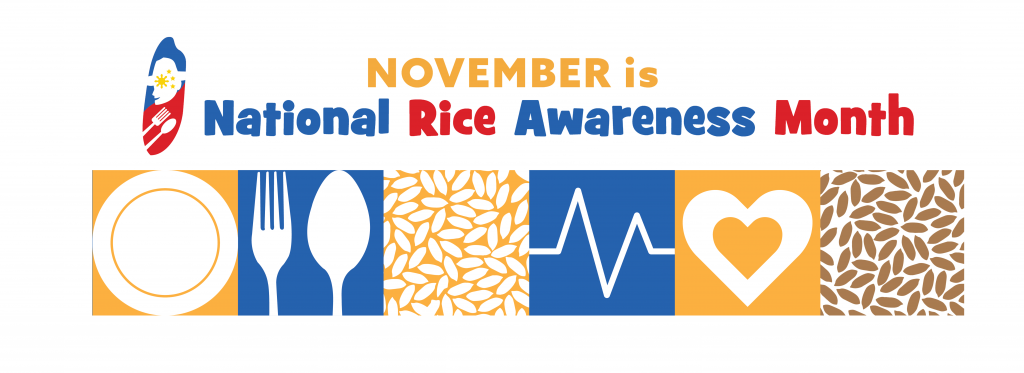
Be RICEponsibly healthy. The public is encouraged to consume healthier rice produced by Filipino farmers in the month-long celebration of the National Rice Awareness Month (NRAM) this November.
The celebration, which kicks off on Nov. 8, highlights the importance of pigmented and brown rice with the theme “Be RICEponsibly healthy.” Golden Rice is also being introduced.
Food scientist Dr. Marissa V. Romero of DA-PhilRice stressed that the health benefits of rice depend on its type.
“White or milled or polished rice is a good source of carbohydrates that provide the energy needed in our daily functions. It also contains 6-10% protein. Unfortunately, this kind of rice has a relatively high glycemic index (GI), which indicates a faster conversion of carbohydrates to sugars, particularly glucose,” she explained.
Romero recommends the consumption of brown or unpolished rice as it has more fiber, minerals, and vitamins, particularly B vitamins. Brown rice also has a lower GI than white rice.
“This type of rice is rich in nutrients because its bran is kept intact. Thus, its consumption could help prevent obesity and the onset of lifestyle diseases, as shown by some clinical studies,” she said.
Meanwhile, pigmented rice such as black or red rice contain phytochemicals in the bran.
“These phytochemicals have high antioxidant activity that strengthens our bodies against chronic lifestyle diseases. They scavenge free radicals, which usually destroy body cells and cause health complications such as poor eyesight, diabetes, atherosclerosis (blood flow restriction due to fat buildup), and cancer,” she added.
Romero also mentioned Golden Rice, a type of rice with beta-carotene, which can be converted into vitamin A as needed by the body. Studies show that a cup of cooked Golden Rice can provide 30-50% estimated average requirement of vitamin A for pre-school children and two cups for school children and adults.
Consumers are also urged to patronize rice produced by Filipino farmers as based on a comparative study, the country’s rice is generally less exposed to pesticides than imported rice.
Activities will include healthy rice exhibits, media engagement, and social media activities like posting of rice trivias, promotion of healthy rice, patronage of local rice, and not wasting the staple food.
In addition, the public is reminded to avoid wastage to help achieve rice security. The 2018 Household Food Consumption Survey of the Food and Nutrition Research Institute showed that 48g of the total 67g food waste in a household are cereals and cereal products.
NRAM is observed every November pursuant to Presidential Proclamation No. 524, s.2004. (CLB Gado-Gonzales)




